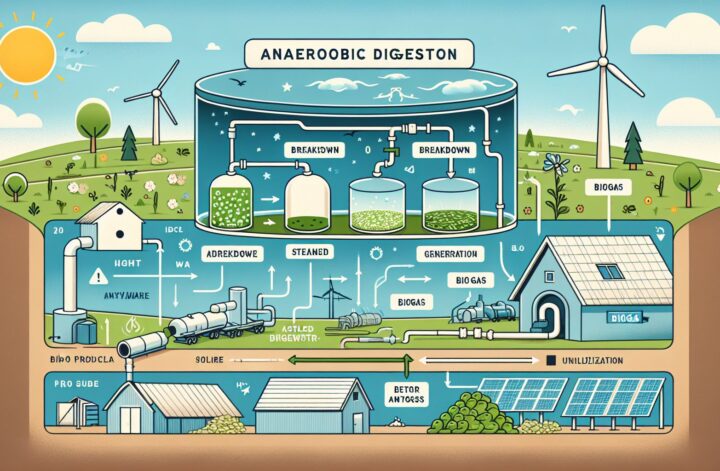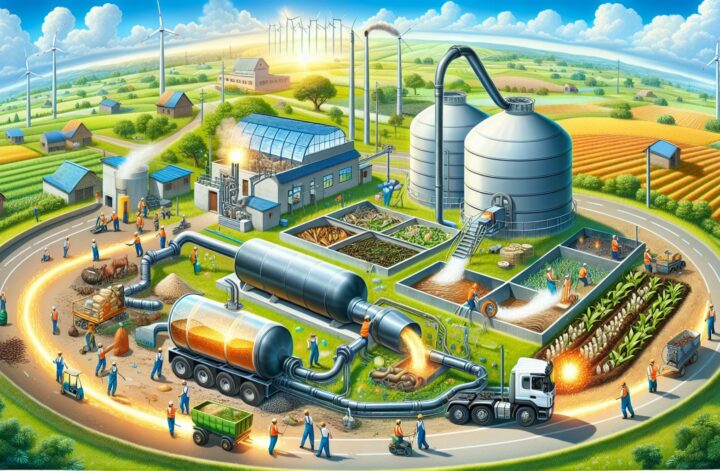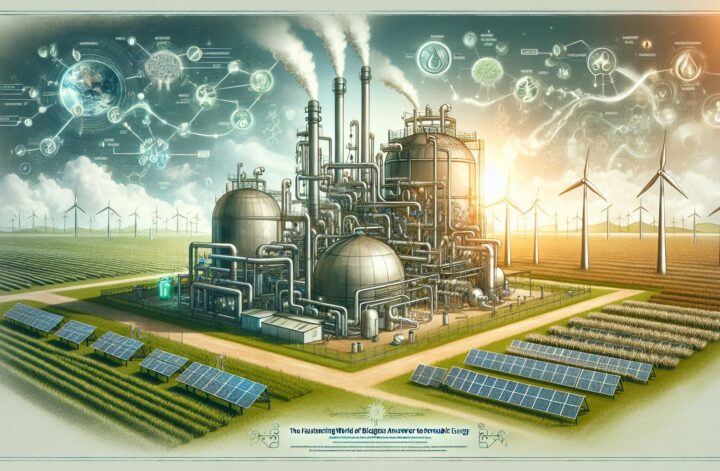Humanity’s search for new, cleaner sources of energy is an ongoing, global initiative. Among the multiple forms of renewable energy available, the production of biogas through anaerobic digestion, is arguably one of the least understood and underappreciated. This article aims to shed some light on the world of biogas production, its numerous environmental benefits, and the science underpinning anaerobic digestion.
What is Anaerobic Digestion?
Anaerobic digestion (AD) is a series of biological processes in which naturally-occurring microorganisms break down organic matter, such as food waste and agricultural residues, in the absence of oxygen [1]. This is typically achieved within an enclosed tank known as an anaerobic digester.
The AD process primarily consists of four stages:
-
Hydrolysis: The breakdown of complex organic matter into simpler molecules like sugars, amino acids, and fatty acids.
-
Acidogenesis: Here, these simple molecules are converted to volatile fatty acids (VFAs) and alcohols.
-
Acetogenesis: This stage sees the transformation of VFAs and alcohols into acetic acid, CO2, and hydrogen.
-
Methanogenesis: This final stage involves the conversion of acetic acid and hydrogen into methane gas by methanogenic archaea [2].
Biogas Production
Biogas, as a product of AD, is made up primarily of methane (50-75%) and carbon dioxide (25-50%), with traces of other gases such as hydrogen sulphide. This gas mixture can be used as a renewable alternative to natural gas for generating heat and electricity, offering a viable option for sustainable energy production.
Advantages of Biogas
The key advantages of biogas include:
-
Sustainable Energy Source: Anaerobic digestion provides a renewable source of energy, reducing our reliance on fossil fuels.
-
Waste Management: AD offers an effective solution for organic waste treatment, reducing the amount of waste going to landfill.
-
Methane Capture: By capturing methane, a potent greenhouse gas, its release into the atmosphere is minimized, thus mitigating climate change [3].
-
Co-Digestion: AD is capable of co-digesting multiple types of organic materials, making it a highly versatile waste management method.
-
Digestate: Not only does AD produce biogas, but it also results in a by-product known as digestate – a nutrient-rich fertilizer that can be used in agriculture.
The Anaerobic Digester
The heart of the AD process is the anaerobic digester. The anaerobic digester design accommodates the specific stages of anaerobic digestion. The bacteria responsible for the digestion process require carefully controlled conditions to work effectively. Methanogenesis, in particular, can take place under two main conditions:
-
Mesophilic digestion, where the temperature in the digester is maintained between 25 °C and 40 °C.
-
Thermophilic digestion, with temperatures ranging from 50 °C to 70 °C.
Factors such as hydraulic retention time (HRT), solid retention time (SRT), and organic loading rate (OLR) should also be considered. Syntrophic relationships (the mutual interaction between different species of bacteria) play a critical role in maintaining the overall digester health [2].
Challenges
While anaerobic digestion and biogas production present numerous benefits, challenges, including stress factors like inhibition of the digestion process, ammonia toxicity, sulfide toxicity, and trace element deficiency, may arise. Ensuring optimal conditions to keep the complex ecosystem of the digester healthy is critical.
Conclusion
Despite the challenges, biogas production through anaerobic digestion has the potential to play a pivotal role in energy production and waste management. Further research and development in the sector, especially towards enhancing digester health, biogas upgrading, and biogas scrubbing techniques, would undoubtedly pave the way to a greener future.
References
[1] Anaerobic digestion (AD). (n.d.). American Biogas Council. https://americanbiogascouncil.org/biogas/what-is-anaerobic-digestion/
[2] Rapport, J., Zhang, R., Jenkins, B. M., & Williams, R. (2008). Current Anaerobic Digestion Technologies Used for Treatment of Municipal Organic Solid Waste. California Environmental Protection Agency. https://www2.calrecycle.ca.gov/Publications/Download/737
[3] Biogas: Benefits. (n.d.). U.S. Environmental Protection Agency. https://www.epa.gov/agstar/benefits-anaerobic-digestion-and-biogas




